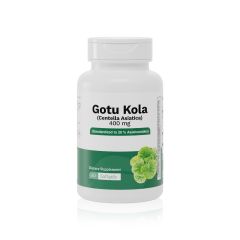How Gotu Kola Improves Circulation and Combats Cellulite in the Glutes
- Home
- Nutra Blog: Health and Nutrition
- How Gotu Kola Improves Circulation and Combats Cellulite in the Glutes

How Gotu Kola Improves Circulation and Combats Cellulite in the Glutes
Jul 11, 2025
By
Nutra Llc
0 comment(s)
1. Stimulates Collagen Production and Enhances Skin Elasticity
The active compounds in Gotu Kola, such as asiaticoside and madecassoside, have increased type I collagen production in the Skin. This contributes to greater firmness and elasticity, reducing the appearance of cellulite. (4)
2. Improves Microcirculation in the Skin
Studies have shown that Gotu Kola can enhance Microcirculation in the Skin. This improvement in circulation helps prevent excessive fat accumulation in cells, which is a key factor in cellulite formation. (1)
3. Anti-Inflammatory Properties That Reduce Cellulite-Related Inflammation
Gotu Kola extracts possess anti-inflammatory properties that can reduce inflammation in the Skin, contributing to a smoother and more even appearance. (1)
4. Effective Topical Application for Cellulite Reduction
Research has shown that the topical application of creams containing Gotu Kola can effectively reduce the appearance of cellulite. For example, a 28-day study with twice-daily application showed significant improvements in thigh circumference and skinfold thickness. (3)
Conclusion
Incorporating gotu kola into your daily routine can be an effective strategy for improving circulation in your glutes and reducing the appearance of cellulite. Remember, consistency is key to visible results.
Scientific References
- Ratz-Łyko, A., Arct, J., & Pytkowska, K. (2016). Moisturizing and antiinflammatory properties of cosmetic formulations containing Centella asiatica extract. Indian Journal of Pharmaceutical Sciences, 78(1), 27-33. https://pmc.ncbi.nlm.nih.gov/articles/PMC4852572/?
- Bylka, W., Znajdek-Awiżeń, P., Studzińska-Sroka, E., & Brzezińska, M. (2013). Centella asiatica in cosmetology. Postępy Dermatologii i Alergologii, 30(1), 46-49. https://pmc.ncbi.nlm.nih.gov/articles/PMC3834700/?
- Escalante, G., Bryan, P., & Rodriguez, J. (2019). Effects of a topical lotion containing aminophylline, caffeine, yohimbe, L-carnitine, and Gotu kola on thigh circumference, skinfold thickness, and fat mass in sedentary females. Journal of Cosmetic Dermatology, 18(4), 1037-1043. https://pmc.ncbi.nlm.nih.gov/articles/PMC7379994/?
- Hashim, P., Sidek, H., Helan, M. H., Sabery, A., Palanisamy, U. D., & Ilham, M. (2011). Triterpene composition and bioactivities of Centella asiatica. Molecules, 16(2), 1310-1322. https://pmc.ncbi.nlm.nih.gov/articles/PMC6259745/?
YOU MAY ALSO BE INTERESTED IN
*Disclaimer: Statements made, or products sold through this website, have not been evaluated by the United States Food and Drug Administration.
They are not intended to diagnose, treat, cure or prevent any disease.

